We need your consent to use the individual data so that you can see information about your interests, among other things. Click "OK" to give your consent.
ASTM F1471-09
Standard Test Method for Air Cleaning Performance of a High-Efficiency Particulate Air- Filter System (Withdrawn 2018)
Automatically translated name:
Standard Test Method for Air Cleaning Performance of a High-Efficiency Particulate Air- Filter System
STANDARD published on 1.3.2009
The information about the standard:
Designation standards: ASTM F1471-09
Note: WITHDRAWN
Publication date standards: 1.3.2009
SKU: NS-50415
The number of pages: 13
Approximate weight : 39 g (0.09 lbs)
Country: American technical standard
Category: Technical standards ASTM
The category - similar standards:
Annotation of standard text ASTM F1471-09 :
Keywords:
aerosol dilution, aerosol generator, average penetration, background particles, challenge aerosols, coincidence, compressed-air nebulizer, dilution ratio, fractional penetration, HEPA, laser aerosol spectrometer, test aerosols, Aerosol dilution, Aerosol generator, Airflow performance, Average penetration, Background particles, Calibration--spectrochemical analysis instrumentation, Challenge aerosols, Coincidence counting, Compressed air, Diluter calibration, Dilution ratio/value
Additional information
| Significance and Use | ||||
|
This test method describes a procedure for determining the penetration of aerosols through a one- or twostage HEPA filter installation. Testing multiple filter stages as a single unit eliminates the need for: installation of auxiliary aerosol bypass ducts, installation of aerosol injection manifolds between filter stages, and entry of test personnel into contaminated areas. It provides for filter testing without interruption of plant processes and operation of ventilation systems. The procedure is applicable for measuring penetrations requiring sensitivities to 0.1 μm. A challenge concentration of 2.5 × 10 5 particles/cm3 (p/cm3), is required for evaluation of one-filter stage, and 2 × 106 p/cm 3, or about 30 μg/L (assuming unit density), is required to properly evaluate a two-stage HEPA filter system as one unit. This test method can determine the penetration of HEPA filters in the particle-size range from 0.1 to 0.2 μm where the greatest penetration of particles is likely to occur. |
||||
| 1. Scope | ||||
|
1.1 This test method covers the procedure and equipment for measuring the penetration of test particles through high-efficiency particulate air (HEPA) filter systems using a laser aerosol spectrometer (LAS). This test method provides the capability of evaluating the overall effectiveness of HEPA filter systems consisting of one or two filter stages. 1.2 The aerosols used for testing have a heterodisperse size distribution in the submicrometer diameter range from 0.1 to 1.0 μm. 1.3 The purpose for conducting in-place filter testing by this test method is in the ability to determine penetration of multi-stage installations, without individual stage tests. Particle penetration as low as 10−8 can be measured by this test method. Also, the LAS provides a measure of penetration for discrete particle sizes. 1.4 Maximum penetration for an installed HEPA filter system is 5 × 10−4 for one filter stage, and 2.5 × 10−7 for two stages in series is recommended. Note 1—Acceptance penetration criteria must be specified in the program, or owners specifications. The penetration criteria suggested in this test method is referenced in Ref (1). 1.5 The values stated in SI units are to be regarded as the standard. 1.6 This standard does not purport to address all of the safety problems, if any, associated with its use. It is the responsibility of the user of this standard to establish appropriate safety and health practices and determine the applicability of regulatory limitations prior to use. Specific precautionary statements are given in 9.6. |
||||
| 2. Referenced Documents | ||||
|
Similar standards:
Historical
1.11.2007
Historical
1.4.2008
Historical
1.10.2012
Historical
1.5.2013
Historical
1.11.2011
We recommend:
Technical standards updating
Do you want to make sure you use only the valid technical standards?
We can offer you a solution which will provide you a monthly overview concerning the updating of standards which you use.
Would you like to know more? Look at this page.


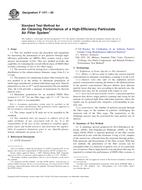
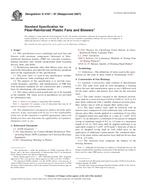 ASTM D4167-97(2007)..
ASTM D4167-97(2007)..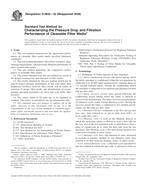 ASTM D6830-02(2008)..
ASTM D6830-02(2008)..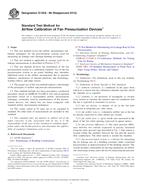 ASTM E1258-88(2012)..
ASTM E1258-88(2012)..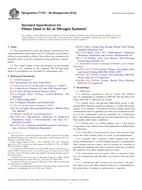 ASTM F1791-00(2013)..
ASTM F1791-00(2013)..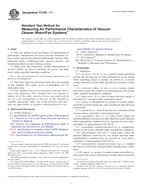 ASTM F2105-11
ASTM F2105-11
 Cookies
Cookies
